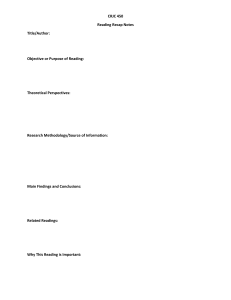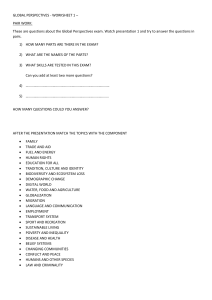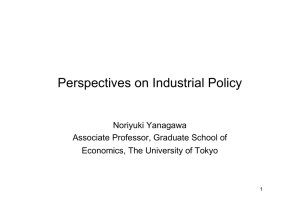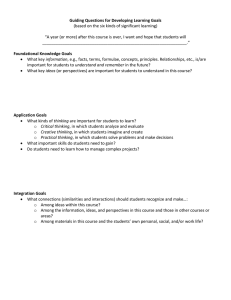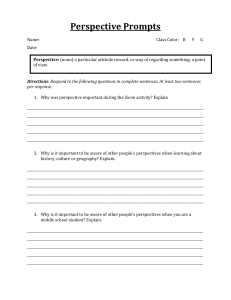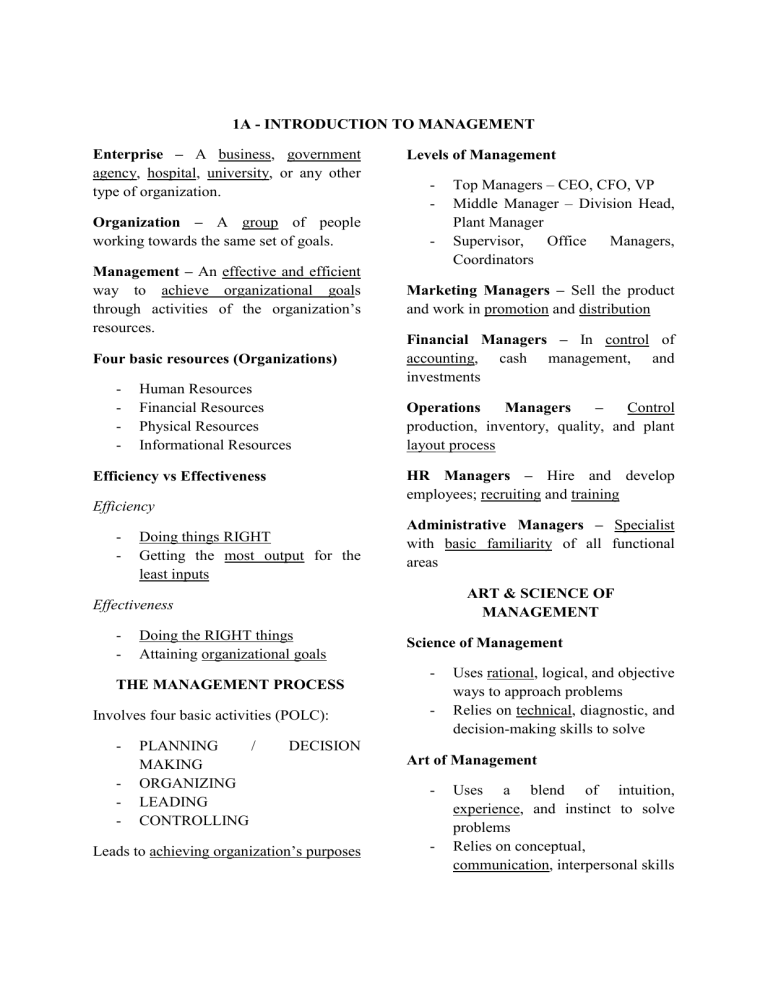
1A - INTRODUCTION TO MANAGEMENT Enterprise – A business, government agency, hospital, university, or any other type of organization. Organization – A group of people working towards the same set of goals. Management – An effective and efficient way to achieve organizational goals through activities of the organization’s resources. Four basic resources (Organizations) - Human Resources Financial Resources Physical Resources Informational Resources - Efficiency Marketing Managers – Sell the product and work in promotion and distribution Financial Managers – In control of accounting, cash management, and investments Operations Managers – Control production, inventory, quality, and plant layout process Doing things RIGHT Getting the most output for the least inputs Administrative Managers – Specialist with basic familiarity of all functional areas ART & SCIENCE OF MANAGEMENT Effectiveness - Doing the RIGHT things Attaining organizational goals THE MANAGEMENT PROCESS Involves four basic activities (POLC): - PLANNING / MAKING ORGANIZING LEADING CONTROLLING Top Managers – CEO, CFO, VP Middle Manager – Division Head, Plant Manager Supervisor, Office Managers, Coordinators HR Managers – Hire and develop employees; recruiting and training Efficiency vs Effectiveness - Levels of Management Science of Management - Uses rational, logical, and objective ways to approach problems Relies on technical, diagnostic, and decision-making skills to solve DECISION Leads to achieving organization’s purposes Art of Management - - Uses a blend of intuition, experience, and instinct to solve problems Relies on conceptual, communication, interpersonal skills 1B - HISTORICAL CONTEXT OF MANAGEMENT 3000 B.C. – Written rules for governance (Sumerians) 2500 B.C. – Management practices for construction of pyramids (Egyptians) 2000 B.C. – Extensive set of laws for governance (Babylonians) 1500 B.C. – Used governing systems for cities and state (Greeks) Industrial Revolution - Mass production of technology Machine power for human labour Scientific Management – Improve the performance of individual workers General Administrative Management – Managing the total organization 1000 B.C. – Organized structure for communication (Romans) Frederick Winslow Taylor – Increased efficiency and productivity for a job to be done 500 B.C. – structure for (Chinese) Henri Fayol – Identified the management functions of POLC and 14 Principles of Management Extensive organization governmental agencies A.D. 500 – Used organization design to control the seas (Venetians) Adam Smith – Scottish Philosopher - Father of Modern Economics Wrote The Wealth of Nations (1776) Robert Owen – Welsh Industrialist - Recognized the importance of human resources Believed that a better quality of life yields a happier society Charles Babbage Mathematician - – Father of Computing Applies mathematics management English to - Division of Work Authority Discipline Unity of Command Unity of Direction Subordination Remuneration Centralization Scalar Chain Order Equity Stability of Tenure Initiative Esprit de Corps Unity of Command – One boss who is accountable for their orders Authority – The right to give commands and receive obedience from subordinates Max Weber – Theory of Bureaucracy which stressed strict rules and a firm distribution of power Behavioural Management Perspective People are the most important asset of an organization Hugo Munsterberg - Psychology and Industrial Efficiency Matching worker’s ability to job requirements The Hawthorne Studies - Work performance depends on social issues and job satisfaction Hawthorne Effect – When workers know people are concerned about them their productivity increases Mayo Management Theory - Employees are motivated more by attention and camaraderie than monetary gains Elton Mayo - Founder of the Human Relations Approach for Management Abraham Maslow - - Advanced a theory that employees are motivated by a Hierarchy of needs Self-actualization Hierarchy of Needs - Self-actualization (Fulfilment) Belongingness (Psychological) Safety needs (Physical) Henry Mintzberg Key management roles: - Interpersonal Roles Informational Roles Decisional Roles Dr. William Ouchi Theory Z - - Increasing employee’s loyalty to the company focused on his wellbeing Increased job commitment and productivity Organizational Behaviour - Study of how humans interact within an organization Focuses on behavioural perspectives Systems Approach System – Collection of elements that are inter-related that produces a unified whole Subsystem – System within another system that is important due to its interdependence Synergy – Subsystems are successful when working together rather than alone Entropy – Where an organizational system declines due to failing to adjust to change Systems Perspective of Organizations Inputs – Raw Materials, Human Resources Transformation – Management Activities Outputs – Products, Information, Human Results Contingency Perspective organization is unique - Each Universal Perspectives – Attempts to identify the best way to manage organizations Effective and Efficient Management Classical Management Perspectives – Methods for enhancing, planning, organizing, and controlling Behavioural Management Perspectives – Motivating performance and understanding individual behaviour Quantitative Management Perspectives – To improve decision making, resource allocation, and operations Contemporary Management Issues - Globalization of product Increasingly diverse workforce Ethics and Social Responsibility Quality as the basis for competition Shift to a service-based economy Challenges of a recovering economy New organizational structures Effects of new information technology in an organization Importance of History - Development of management practices Avoid mistakes made in the past Closed Systems – Are not influenced with their environment Open Systems – Dynamically interacts with their environments
